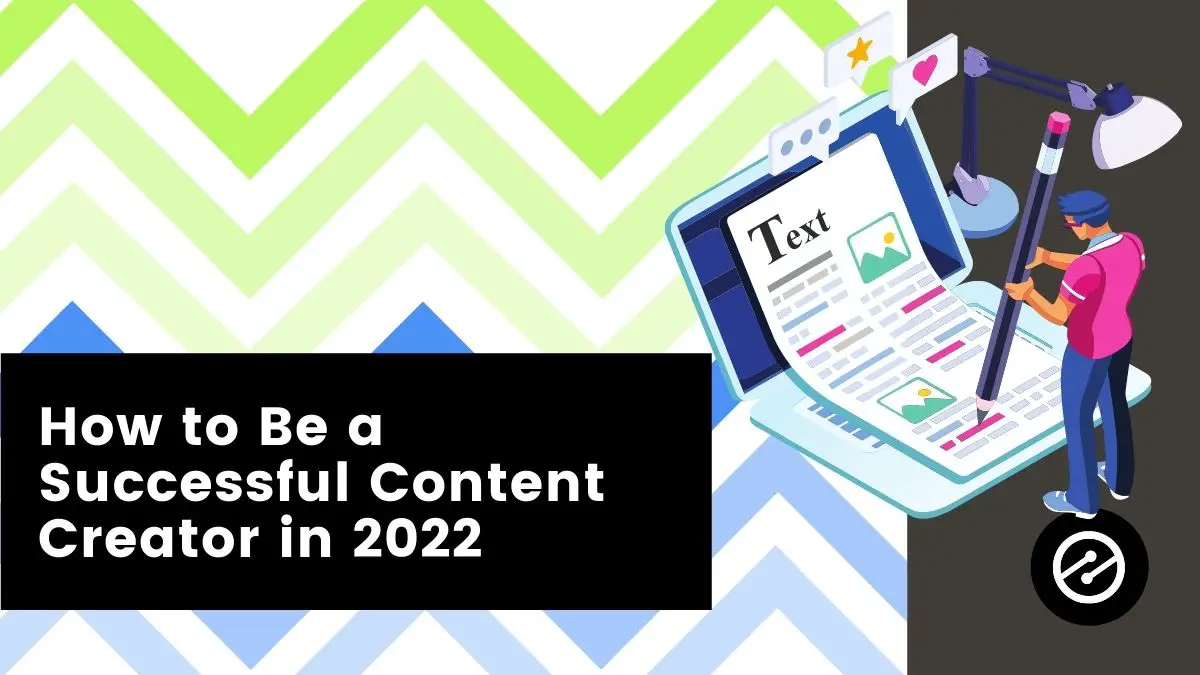It has never been a better time to be a content creator; it is estimated that the online publishing economy is holding strong at roughly $100 billion. Becoming a content creator has also never been so popular; a survey by travel company, First Choice, showed that 75% of US children ages 6 to 17 say they want to become YouTubers when they grow up.
However bright the future seems for content creators, it has also never been more evident the toll it is taking. A 2021 study by Vibely, an online platform for monetizing communities, showed that 90% of content creators are burnt out, while 71% have thought of quitting social media altogether.
Looking at the Gartner Hype Cycle, a graphic tool to show the adoption of new technologies, Bakaus believes we are currently on the downward slope after the Peak of Inflated Expectations and heading towards the Trough of Disillusionment. The Peak of Inflated Expectations is when everyone is the most excited about, interested in, and using a new technology, and ultimately believe in its ability to change the world. The Trough of Disillusionment, however, is when that bubble gets popped and users realize not everything is as great as it seems.
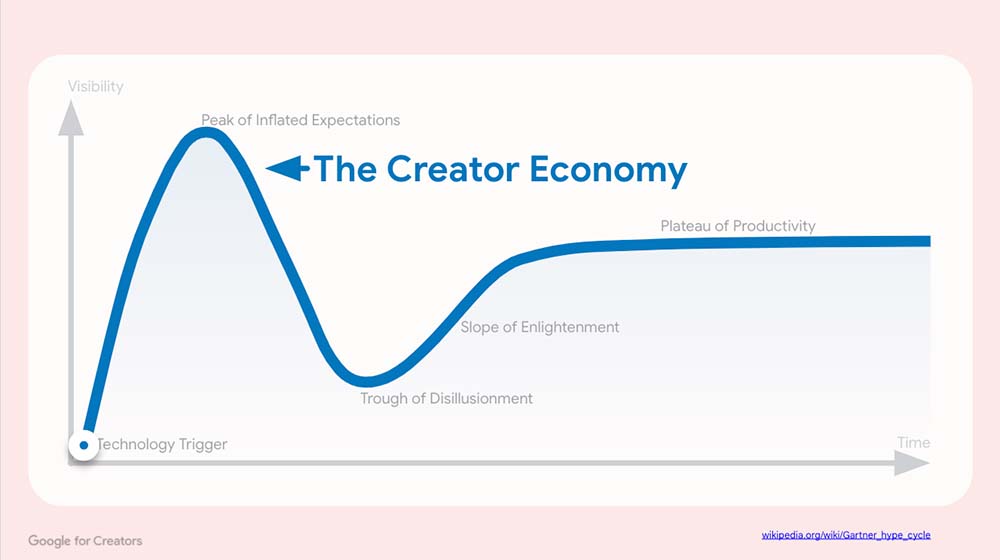
While there is still massive hype surrounding content creation, there are mental health issues and other problems with being a content creator that is now becoming increasingly apparent.
Why content creators are burnt out
So why are content creators burnt out?
Many bloggers and publishers believe they must be on social media in order to attract new audiences and stay relevant.
Social media is now the number one way to discover and distribute content in a lot of verticals, but not all; there is still SEO and aggregators like Pinterest, Google, and Bing. However, social media is a major part of content distribution and creation for a lot of people
The problem with social media is that the time spent on smartphones is not increasing at the same pace as content creation. In 2019, users spent a little less than four hours on their smartphones, and that has only increased to slightly over four hours in 2021. While time on smartphones has certainly increased over the years, there is ultimately only so much time people will spend on their smartphones.
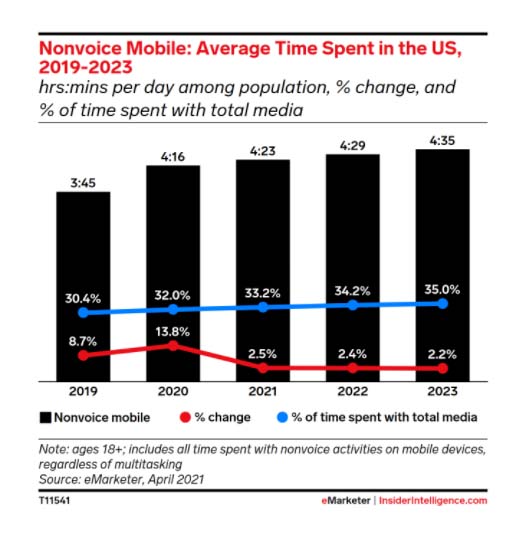
To combat this, social media companies began using algorithms to filter and prioritize specific content, but this in turn has content creators extremely stressed; 65% of creators have said that ‘the algorithm’ is one of the most worrisome parts of being a creator. When you consider how much time a creator spends on content and then how much time most creators think they need to spend on social media, it ends up coming out to over 71 hours of work for creators per week.
Even if a content creator was able to work that many hours without burning out and they could break all of the social media algorithms, if all of your audience is through social media, you don’t own that audience. That audience belongs to the social media platform; you’re not able to reach your audience through email or newsletters, which is a key strategy for professional content creators.
Another problem is that content has a much shorter lifespan on social media; it’s there for possibly hours or days but then it is gone. This is why publishing to your own website is important; on search engines and on video platforms like YouTube, that content is there and accessible as long as the content is hosted on the internet.
On top of all this is monetizing the content. Making a sustained income is different for every vertical, but is becoming increasingly difficult nonetheless. For many verticals, brand deals are a primary source of revenue. For example, in the fashion and beauty industry, 57% of companies engage in influencer marketing. In turn, businesses are making $5.20 for every $1 they spend on influencer marketing.
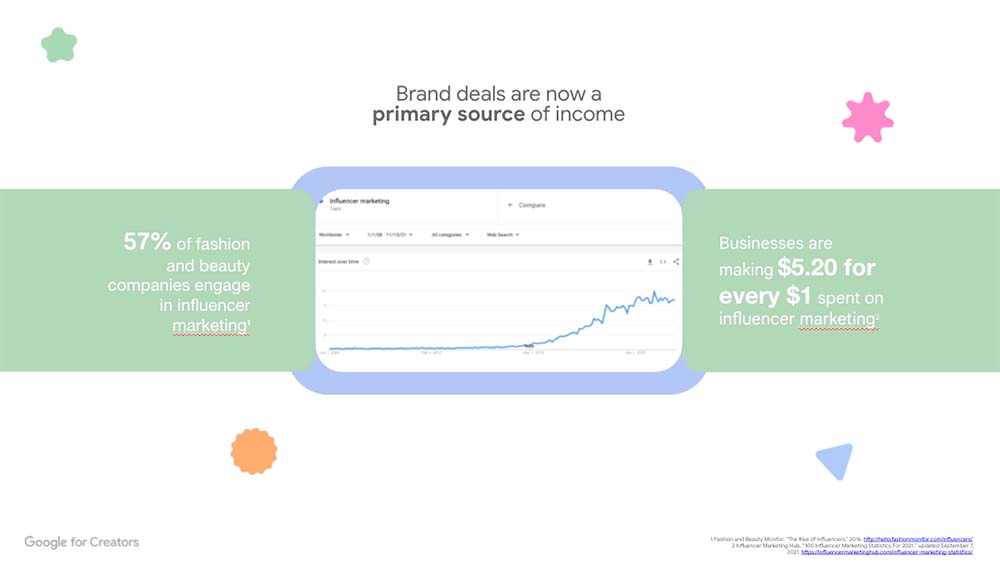
As if all of that wasn’t enough, every time a content creator signs up for a new social media platform, they have to follow the terms and conditions. While websites do have some rules and you don’t want to lose advertisers because of particular behavior, social media platforms are becoming increasingly more strict; one wrong move and your entire account could be shut down, and you would lose all of your audience. Jumping on every new social media platform also spreads content creators too thin. This is why it is best to own your audience outside of social media.
Most content creators would also say that if they only had more time, things would be easier. Speaking with content creators, you can often hear and see the defeat. Many admit that they feel like they ‘can’t do this anymore.’ According to Nuseir Yassin from Nas Daily, a highly successful vlogger, the ‘shelf life’ of a content creator is roughly five years.
All of this to say, it’s become increasingly difficult to become a stable content creator with a healthy work/life balance and regular income. That’s because it’s not even guaranteed that if you are successful on social media as a content creator that you’ll even ever make money off of it.
For example, Kevin Perry is the creator of a very successful video that was shared across multiple platforms. The video received 15 million views on Twitter, 28 million on TikTok, and 30 million on Instagram. However, Perry did not make a single penny from it. This just goes to show that you can be very successful on social media as a content creator but it doesn’t mean you’ll get paid.

You might be saying to yourself, “sure, this all sounds well and good, but if this isn’t the way, what should I be doing instead?”
There are three ways that content creators can move away from a dependency on social media and build their audience in such a way that not only keeps them interested but also earns you more money.
1. Active versus passive income
First, content creators should switch from active income to passive income. Active income is things like regular content, sponsored posts, product endorsements, and handmade products. Passive income, however, is anything you don’t have to work for–ads and affiliate links, license royalties, digital products, downloadable content, and brand-driven merchandise.
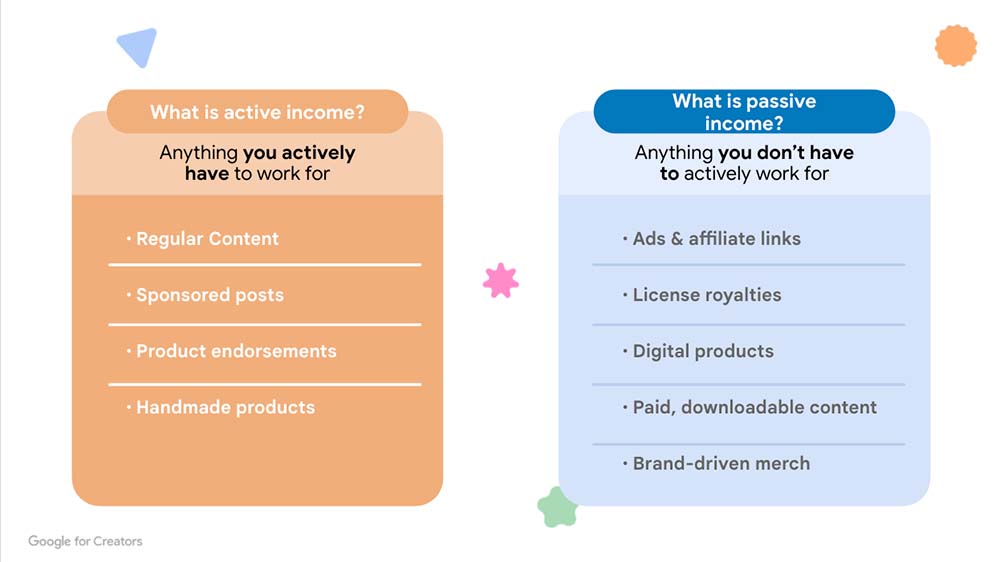
Not every form of passive income is right for every content creator, so it’s important to choose the right ones for your content. Most website owners who monetize their content use ads, which is a completely legitimate way to make money. However, ads rely on views, and there are plenty of other ways to supplement this income. If you look at something like sales, you can further diversify how you’re earning money on your website: site memberships, merchandise, online courses, etc.
2. Find 1,000 true fans
Coined in 2008 by Kevin Kelly, the founding executive editor of Wired magazine, the ‘1000 true fans’ theory is that instead of trying to make money with your audience, you find 1,000 people who are truly big fans of your content. They’re willing to follow you everywhere and are willing to support you financially.
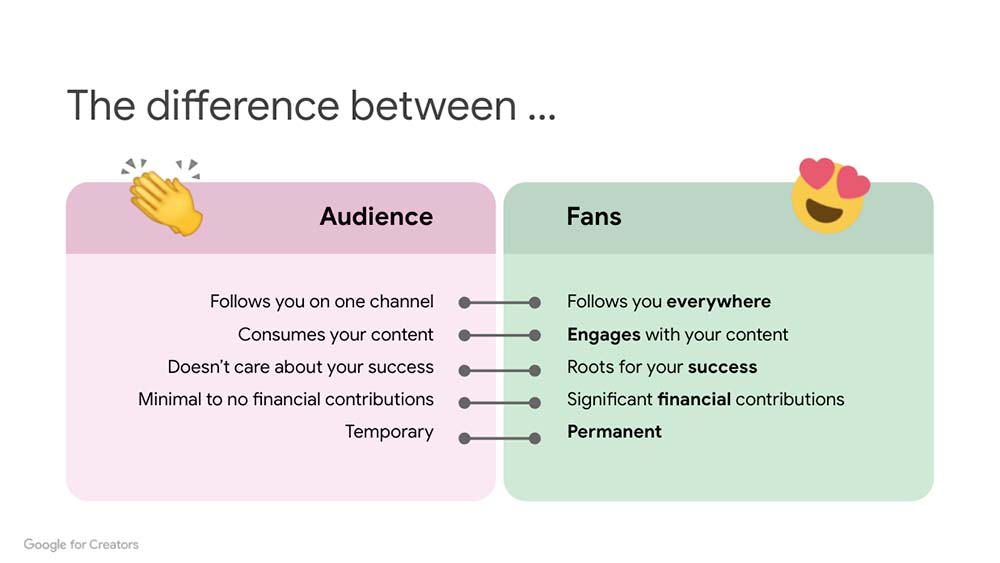
These 1,000 true fans are not just interested in your content but are also interested in you as a content creator; they want to see you succeed and contribute to the creator’s overall dreams and goals.
For example, YouTuber Ginny Di has learned how to not only diversify her content but also how to succeed with a loyal fan base over simply just reaching an audience. She has dabbled in music, cosplay, and now tabletop gaming and continually keeps her fans engaged. She has a large following but does not by any means have millions of followers, and yet she is a thriving content creator.
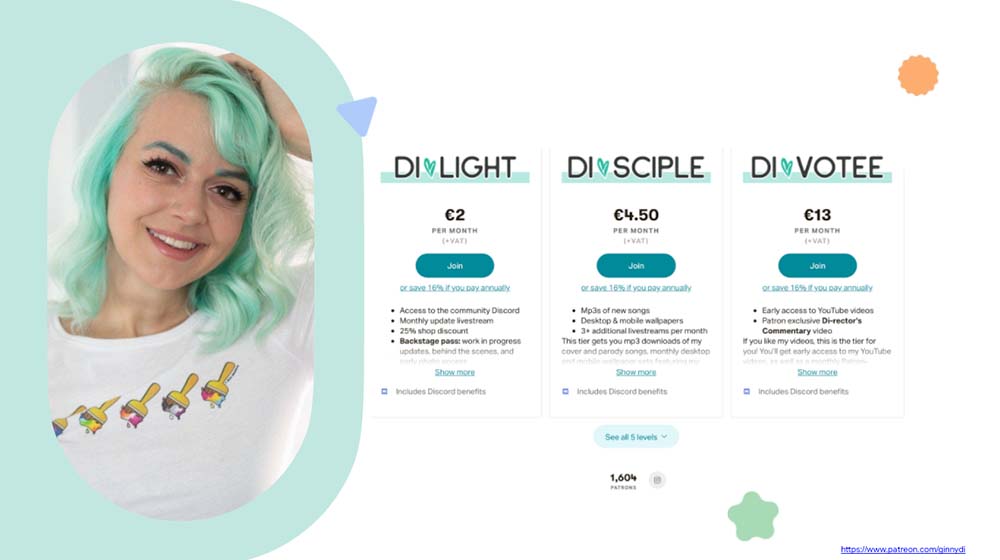
3. Go niche
You can significantly increase your chances of becoming a successful and happy content creator by going niche. You should go all-in on a particular topic that thousands of people love rather than millions. This allows you to build a much stronger and deeper connection with your audience, building that fan-base.
Patreon CEO Jack Conte once said, “You may think your interests are niche – maybe only 1 in 1,000 people like the same things as you – but with 4 billion people online, that’s 4 million people who share your interests. On the internet, no niche is too niche.”
An example we can use is fan art, or artwork created by a fan of a movie, book, TV show, etc. This can get extremely niche, depending on how deep into the content or character the fan art goes. This, in itself, could be niche.
Another niche topic is the art nouveau style, which was popular between 1890 and 1910. There are plenty of opportunities within this topic that a content creator could go niche on, including artists, locations, even specific art pieces.
Now, where this particular content creator went ultra-niche is taking fan art and mixing it with the art nouveau style. Hannah Alexander, the artist, has a very loyal fan base with thousands of viewers, and many people pay her for work on Patreon.
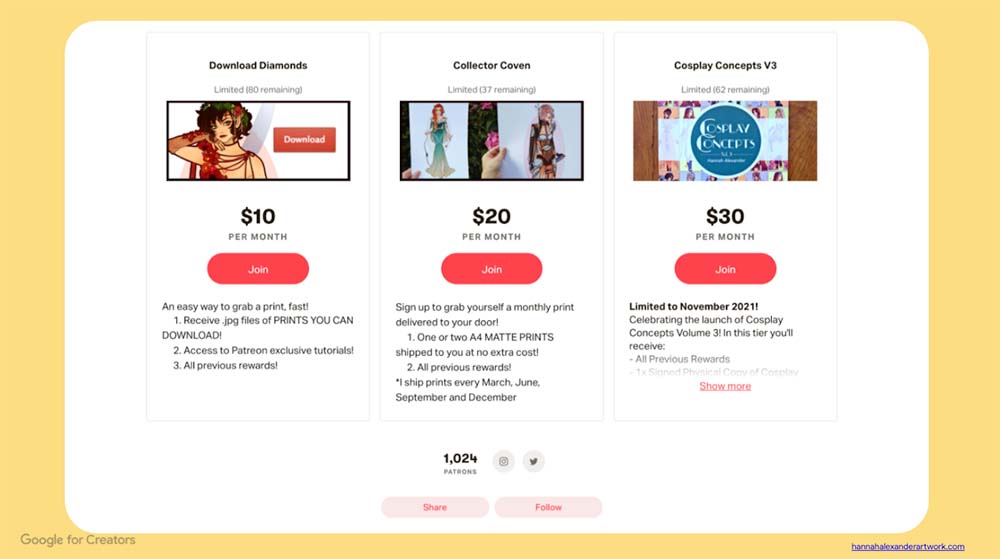
How do I implement these strategies?
In order to implement these three strategies, you need access to three things:
- Direct access to fans and their email addresses
- Flexible monetization you control
- Creative freedom and ownership of your content
If you’ll notice, none of these are able to be accomplished simply through social media.
Social media should be a supplement to your content and your website, not the means by which you solely use and rely on. The most successful publishers out there are those who don’t focus on building a strategy that spans both but those that use social media as a way to convert their audience into fans. You can get users’ attention through social media but then use your website to include extra and exclusive content.
Being a content creator doesn’t have to be exhausting and burnout doesn’t have to happen. Additionally, making the switch from social media dependency to dependency on ‘1,000 true fans’ on your website doesn’t have to be difficult. We have a great blog on how to grow your website from successful YouTuber and publishing ‘professor’ Ron Stefanski that has tips on building a successful website, including how to collect emails. He also has another blog on monetizing your content successfully, which includes ads and selling your services and digital products.

